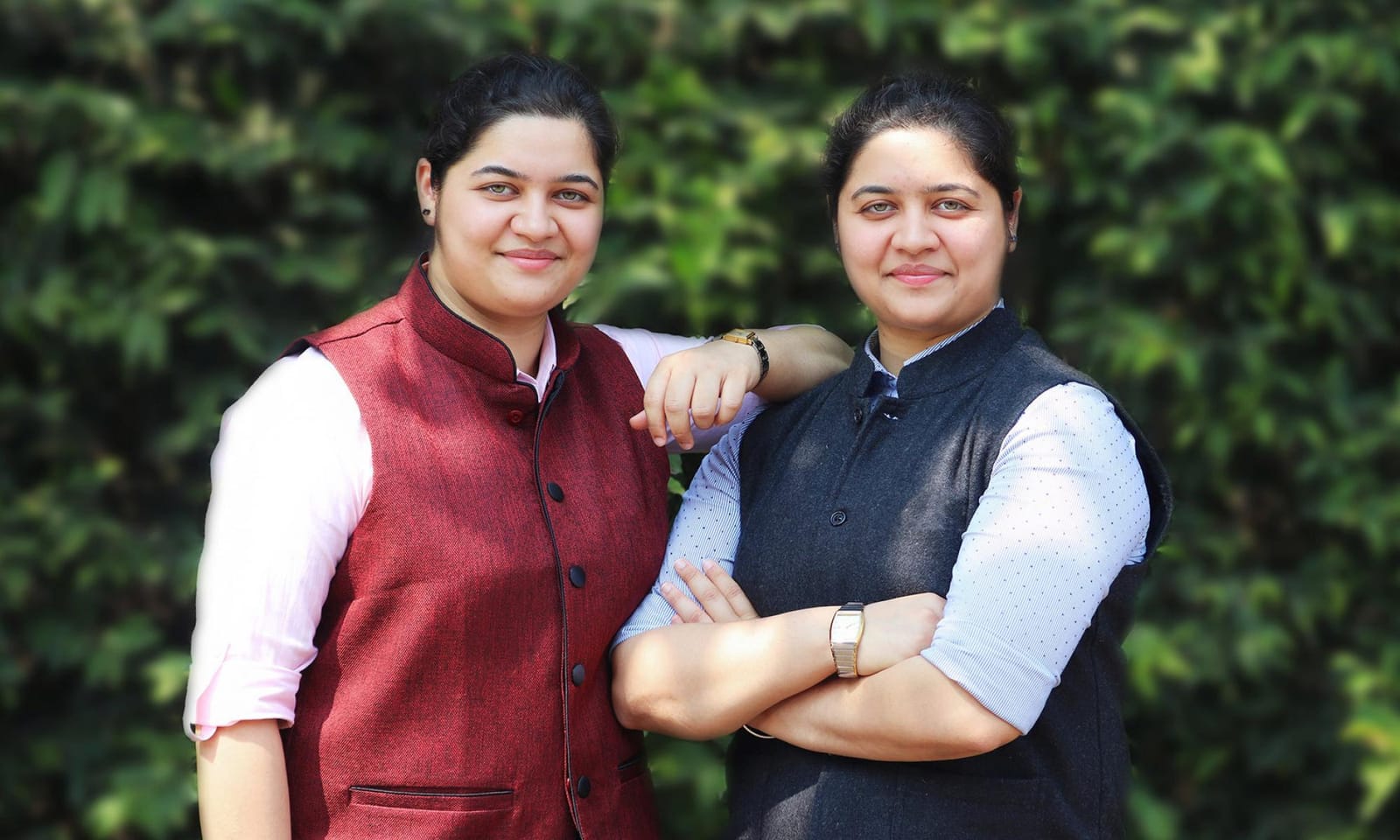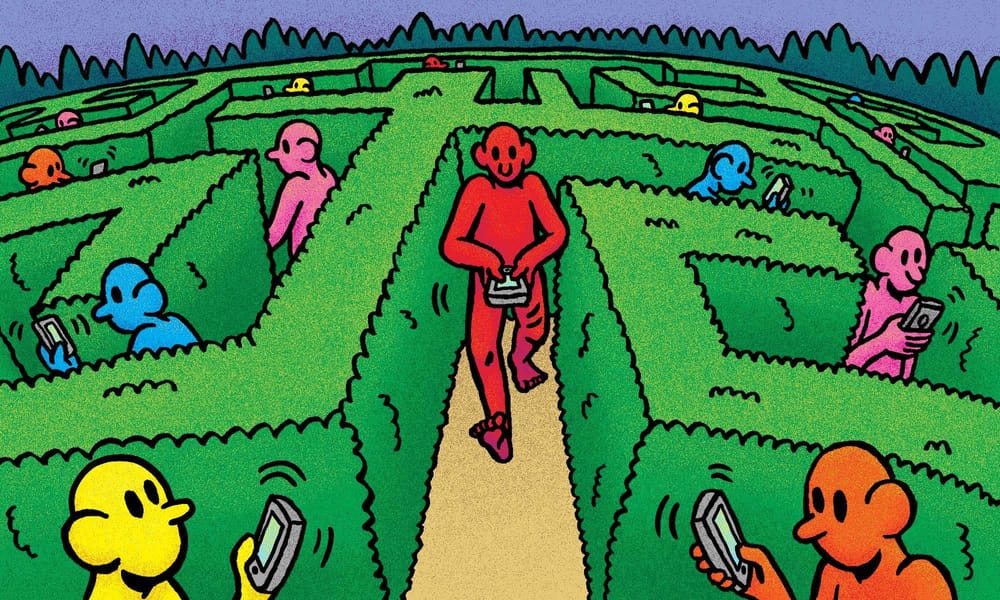Modern problems require modern solutions. The new frontier of solution-based innovation lies in the field of biotechnology. Bioinnovators: The Humans At The Forefront Of Biotech is a series of interviews with the organisations and entrepreneurs at the forefront of changing the world through biotechnology. With each interview, we hope to shine the light on conscious innovators and trailblazers across the globe who are using the natural world, combined with modern technological innovations, to find new solutions to the world’s most pressing problems.
Electric vehicles were hardly the first choice for the Indian commuter when twins Nikita and Nishita Baliarsingh began looking into the industry. Upon researching, they realised that the lack of demand for e-vehicles had less to do with the vehicles themselves and more to do with the high cost, long charging times and low mileage of the lithium-based batteries used to power them. Their solution was Nexus Power, biodegradable batteries made from proteins extracted from pollution-causing crop residue. Since setting up in 2020, the project has garnered recognition and support from media outlets like Forbes as well as the Indian government. Nikita Baliarsingh, chief innovation officer and one half of the duo behind Nexus Power, spoke to me about how the batteries work, what it takes to be an entrepreneur and how this brand new technology could transform the electric vehicle sector in India.
I first wanted to ask you where you got the idea for biodegradable electric batteries and why you decided to focus specifically on this area?
I’ll answer your second question first because the journey began from there. So we were actually really passionate about sustainability, and electric vehicles was something that was always an exciting field to look at. So we started our journey by looking at making electric vehicles in India which had indigenously developed here, but soon we realised that electric vehicles are not as popular and there are some concerns for them. And further research told us that the concern is not with the vehicle but more on the battery side. So there has to be some work done in the battery technologies to uplift the standard and acceptance of electric vehicles. So that’s how we decided to get into electric vehicle batteries and started exploring that field of the technology that is available and what are the different alternatives that people are working on and what new things can we look at. And eventually we were kind of reading a lot of research papers, reading books and trying to understand things that were done earlier in, say, 1950s, 1960s. Electric vehicles is not a new concept; it did exist in the early 1940s, ‘50s as well. But it never became popular so we went down to those eras and tried to see what was being done. And that is where we stumbled upon a book which said that proteins could have potential benefits in electrolytes. So we built it up from there and we thought if we are open to alternative technologies, why shouldn’t we try and make a battery out of peptides and proteins instead of looking at lithium ions or aluminium or say any other metal? Why not look at proteins which are abundantly available in any geography of the world?
I come from a science background, so the first question that came to my mind when I heard about you guys was in relation to your educational background. I was surprised to learn that you both come from a business background, and so I’ve got a two-part question: why did you decide to pursue business in school and how did you get that scientific knowledge that you needed to develop something like this? Because it’s such a specialised product, right?
I completely agree with you; it’s kind of a very intense science experiment based product that we’re working on but, you know, we always believe that to build a company you don’t have to be making it yourself. So the idea here is that to make a brand, you don’t have to make the product yourself. And there’s a difference in making a car and building a brand on a multinational level. So that is what the mindset was and that is why we chose to pursue our education in the management side, business management and commerce. And of course, we had a liking, we had a grooming throughout our school which gave us insights towards that domain, so that is where the inclination towards business management came from. And as I said, to build a brand you don’t have to make the product yourself. You could always have a team who can help you do that. So that’s how these things happen and apart from that the scientific knowledge, yes, we did need some technical know-how of the product to do the initial experiments. And for that we did a lot of reading online; we also took up a few certificate programs to kind of recoup ourselves into the domain that we were entering. And I think that was pretty well favourable for us and worked. So we did quite a few certificate programs; we still keep doing a few of them in electric vehicle design and electric vehicle battery systems. Along with all the work that we do on the R&D front, we keep taking up courses as well to keep ourselves updated with the industry trends and market needs.
Speaking of learning, do you feel like the Indian education system equips students to be innovators or disruptors? Do you feel like our education system is doing enough, and if not, what’s missing?
As far as promoting innovation is concerned, yes we have a serious concern there. Because ever since childhood and ever since we join school as students, we are fed the mindset of trying to look for a job. So ever since you start your education, the first thing they tell you is if you get a good job, you’ll get a good pay and you’ll have a good life. Nobody tells you that you can start your own company and still get good money and still have a good life. So that mindset, you know, it changes after you probably finish your graduation or you do your job for some time and then you want to start your company. So you’ve already wasted so many years of your life in thinking and looking for a job and then suddenly you want to shift to making a company. So, at least you need another 10-15 years to understand this domain when it doesn’t happen since your childhood. If it starts happening in your school itself—like for us it happened in our school, so that is why we were able to start so early. Because we were 10-11 years old and we were told this concept of entrepreneurship and starting a company and the good sides and the bad sides of it. So we could kind of evaluate and choose our stream. Accordingly, if every school, every education institute looks at promoting job seekers as well as innovators and entrepreneurs at the same age, we will have many more who will step up to start their own companies and innovate in different ways.
Yeah, exactly and it’s not that we don’t have intelligent or creative people in India, right? We have a lot of them.
No, we have plenty of them; we have plenty of people who are very smart and very intellectually active, but the concern is that they need jobs and they need money and when they get into jobs, they don’t explore their innovative side so much.
So we have dedicated this edition to biotechnology and this is something that we are asking everyone we are interviewing: how would you define biotechnology?
Let’s see. I probably have never thought of doing this before, but for me what I consider biotechnology is, you know, there are so many things, so many equipments that we use on a day-to-day basis. Even as doctors, we are using machines, we are using medicines to treat problems or to find solutions. Biotechnology for me is that domain that builds these equipments, these solutions that help people progress in life. And technically, we use biological ways of doing it, which is very close to nature. So I believe when there is one system existing which is a natural system, which has not been created by human beings and you are trying to replicate that in your equipment and machines, it’s kind of something you’re borrowing from nature. So it’s more likely to be a very successful adaptation because it is naturally present and you’re trying to just imitate that process and build something on that. So there are more chances of something like this being successful. So biotechnology for me is purely, you know, deriving from nature, being inspired by what already exists and building the equipment, building the ideas and technology to solve problems to progress ahead in life and everything in a biodegradable or biological way. So it’s sustainable and it is also very helpful and growth-friendly.
And I even heard someone say—I think it was at a talk or a conference—that nature has had thousands and thousands of years to optimise all of these processes, so I guess it’s the best place to learn from.
Absolutely. There’s a lot to learn from nature and there’s so many things that you can work on; you can merge natural phenomena with man-made phenomena [to make something] hybrid. So there are endless possibilities and with nature, you don’t really have to spend much getting inspiration from nature so you should always be open about it.
And speaking of learning from nature, I know that you use something called biomimicry in your design. So for our readers, can you explain what biomimicry is and also how you have applied it to your battery?
In simple terms, biomimicry is inspiring yourself from nature or picking up a system which already exists in the natural environment, imitating that or mimicking that process into a man-made invention or device or technology or process and building upon it, which we ideally do and what I believe biotechnology is based on more or less. The human body has this entire system or procedure, I would say, where our energy is produced from the food we eat and, [the body] stores it in our cells and then we use it, and then obviously the energy drains out, and then we have to eat food again. So this process is very similar to a battery, where you plug it into a socket, you have to charge it and [when] you utilise it for some purpose, it discharges and then you have to charge it again. And in the body this entire thing is done by proteins. So proteins are the storehouse and they’re also the transporters of energy to different parts of the body. So that is what we [applied] from the natural phenomena into our batteries. So we’re not using metals, but we’re using proteins. So the protein element in the battery is charging itself up; it is storing the energy for future use; it is transporting it and ensuring the flow of electrons; and then finally we can recharge it again. So that’s the basic biomimicry that has happened in the entire battery technology process at Nexus.
That’s awesome and very interesting. I know these batteries tackle multiple problem areas, such as issues with lithium-ion batteries and then the charging time and then also it deals with pollution. Can you walk me through these problems and exactly how the Nexus batteries are tackling them?
So there are a lot of problems that any innovation can bring up. So lithium-ion was a very promising technology in terms of electric vehicle batteries, but there are certain concerns because it’s not very eco-friendly because the lithium itself is a very volatile metal. In the periodic table, it comes in one of the top elements so yeah, it’s very reactive and in open air, it is hazardous; it is toxic for people who are around it. So lithium kind of poses a lot of threats to the environment in terms of its usage. Second important thing that we highlight when it comes to the Indian market is that we don’t have lithium available here; it has to be imported from different countries. So why not look at something which you can find in India itself; you will reduce the cost of the battery by almost 40 percent if you take up something which is available here instead of importing it from another country. Because the lithium-ion battery packs here are expensive; subsequently electric vehicles are expensive, which, obviously, the Indian market is not very friendly about. So if we can procure our raw material from India itself, then your battery prices will reduce, which subsequently will reduce the prices of the electric vehicle also. That’s one concern.
Another one which we have—that’s not a major concern—is that the charging time is too high. It takes about two to three hours, four hours to charge from zero to 100 percent. If you can reduce that time to say 25 minutes or even say less, 10-15 minutes, it’s more user-friendly for the people who are buying electric vehicles. Something very similar to an IC [internal combustion] engine vehicle: you stop at a fuel station, fill yourself up and you leave. It’s about maximum 10 minutes. With electric vehicles, that’s not the case. You have to be stranded there for two to three hours which is not convenient for people. So if you can do it within 10-15 minutes, that’s a better option. And plus, the kilometre range that you get after two to three hours of charge in a two-wheeler electric vehicle is less than 65 kilometres, which is less than the average driver distance that Indians have per day. So it doesn’t serve any purpose and on top of that, you’re paying more for it. So obviously, the demand, the acceptance of electric vehicles is low in a country like India. So that is where we can kind of got on the R&D and we decided to make batteries which can charge faster.
Proteins tend to transfer electrons very fast. So they do it naturally; we just put it into the battery and it worked; we didn’t do anything much in that. So automatically these batteries charge faster than any other batteries in the market.
Apart from that, they also have a property of being sticky in nature, so they don’t lose electrons too fast. So they don’t discharge too early and if they don’t discharge too early, they give you a longer range—a pretty long driving range which would be about 100-125 kilometres for a two-wheeler, as compared to a 60-65 kilometre range that a lithium-ion battery would give. So again, we didn’t do anything much in this actively as R&D because we just picked proteins and tried to make a battery out of it. A few properties of proteins worked in our favour. So automatically, Nexus became a more efficient option in terms of batteries. So that’s how it is and proteins are eco friendly; we know it. There’s nothing to prove in that. It’s from nature, so it can go back there. So it’s eco-friendly and the best part about it is that it’s abundantly available anywhere, because we are procuring it from the crop residue which, you know, which is there in farmlands. So wherever you have an agriculture-rich state or country, you can procure that farm waste, you can make your proteins and make this battery. It’s not just for India, it’s for any geography in the world; if you have a lot of crop waste, you can make Nexus batteries. And I think it will reduce costs worldwide. And it’s also more convenient for us: we can set up plants also worldwide because I don’t have to look for a specific place where I’ll find my raw material. It’s just available everywhere across the globe.
And you’re also tackling a pollution problem in India by using crop residue as raw materials, right?
Yeah, yeah, absolutely. Because we burn a lot of crop residue here because obviously there’s no worldwide solution to it. So if it’s not burnt and if it’s not kind of procured by us then obviously we are saving the air pollution concerns and we’re also helping the air quality index to improve.
So once this product goes commercial in a couple of years, how do you think that will change the landscape of the electric vehicle sector in India?
I see it in two ways. First, the batteries become more efficient. Second, they become cheaper, so the electric vehicle, in turn, gets cheaper as well. So I see a faster adaptation to electric vehicles in India because, anyway, the fuel prices are going high, so people will have to switch. And so I see a quicker adaptation and acceptance of electric vehicles because you will get more benefits for the vehicles that you buy. And I also see Nexus batteries making a difference for the Indian GDP in return because we are looking at selling to the global market. So if we are manufacturing in India and we are selling it to the global market then we are contributing to the GDP as well. And we do expect some good amount of share in the market and obviously, we are hopeful of raising the GDP growth of India as well through our commercial products.
Have there been any challenges in finding investors? Has the attitude been different from investors, being that you’re young women?
Most of them have not really been very different in terms of looking at young women. There have been a few whom we have interacted with where their gestures sometimes, the kind of interaction that you have, you understand that there is a little bit of bias in their mind. But we haven’t come across anything really harsh yet, thankfully. And I don’t think India is still at that phase. I think we’ve progressed enough to believe people when they take up some business or some work. So yeah, but gestures are there and it’s okay, you have to deal with it.
You guys speak with such confidence and conviction, I feel any kind of preconceived notions just go out the window immediately. Finally, what’s your advice for young, aspiring entrepreneurs or maybe even students who are looking to get into this field?
There are two things, rather three, I would say, that I have learnt out of my journey. In fact, not just me, both me and my cofounder Nishita, we have learnt together and I would just [like to] sum it up for the young, aspiring entrepreneurs. The first thing is that when you get into business or a startup, you have to make sure that all of your documentation is complete. So whether it is your company documents, it is your taxation compliances filing, or it is your work processes, flowcharts, algorithms, everything should be properly documented and written and kept in a proper way, so that whenever you need it, wherever you need it you have something to refer to. And eventually, if you have documented things, you also have the scope of kind of going back and doing a check of what went wrong in this step, a, b, c. And you can then come back and manage things again.
Second, I think we as children, are all very innovative and we have multiple ideas that come to our mind. The concern is that if we don’t try and experiment; we don’t try to practically do it. So I would emphasise when you have a few ideas, try to experiment with it; try and build something on that idea. Until you try, you will never know what you’ll achieve. That’s the point. So when we made our first prototype, the first proof of concept, it was actually made out of kidney beans and chickpeas as a raw material. So, in simple terms, in Hindi it’s rajma and chole. We made a battery out of rajma and chole. So that’s how the entire thing began.
But what I have learnt the most is that entrepreneurship is certainly not just about having the right amount of finances, having the right team or having all your equipment in place. Entrepreneurship is so much more about having an emotional strength as a founder. You will need to face the highs and lows with the same amount of enthusiasm and you have to have a linear graph in terms of your emotions as a founder. And there’s one thing that I strongly believe in, which is “a ship in the harbour is safe, but that is not what it is built for.” So you have to go out and challenge yourself.







